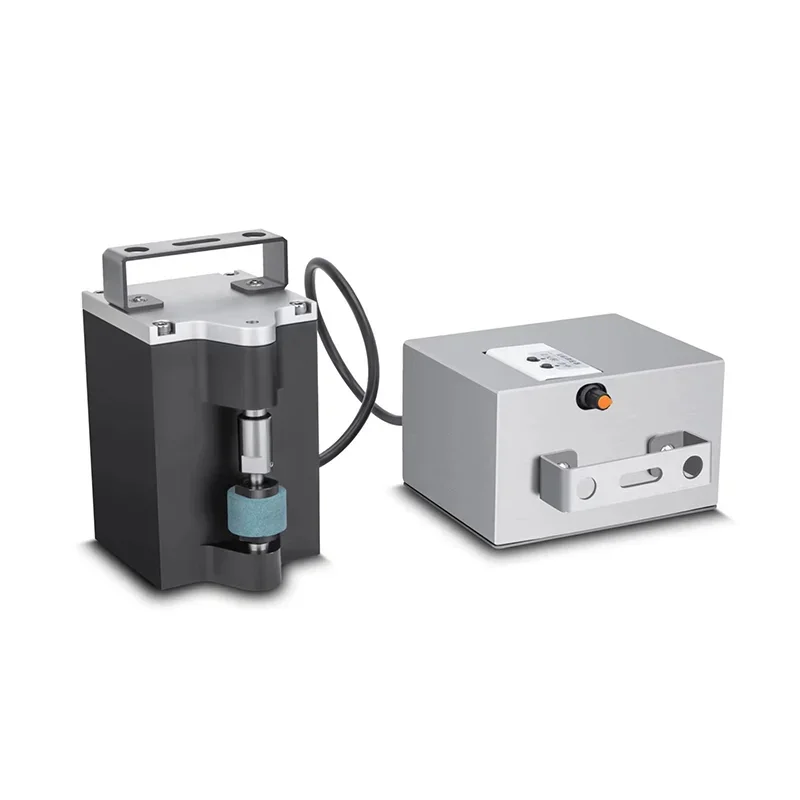The Importance of Using a Grinding Wheel Dresser for Precision Grinding
Precision grinding is a crucial process in various industries, including manufacturing, automotive, aerospace, and more. It involves removing material from a workpiece to achieve the desired shape, size, and surface finish. To ensure accurate and efficient grinding, the use of a grinding wheel dresser is essential. In this article, we will explore what a grinding wheel dresser is, its role, benefits, types, and the importance of using one for precision grinding. We will also discuss dressing techniques and considerations.
What is a Grinding Wheel Dresser?
A grinding wheel dresser is a tool used to reshape and clean the surface of a grinding wheel. It is typically made of a hardened steel bar with a handle and a diamond or other abrasive material embedded on its surface. The dresser is used to remove worn-out abrasive grains, expose fresh cutting edges, and restore the wheel's shape.
The Role of a Grinding Wheel Dresser
The primary role of a grinding wheel dresser is to maintain the shape and condition of the grinding wheel. Over time, the abrasive grains on the wheel wear down, causing the wheel to lose its cutting efficiency and shape. By using a dresser, the worn grains are removed, exposing new sharp edges, and restoring the wheel's cutting ability. Additionally, the dresser helps to remove any glazing or loading on the wheel's surface, ensuring optimal performance.

Benefits of Using a Grinding Wheel Dresser
Improved Grinding Performance: By regularly dressing the grinding wheel, the cutting efficiency is enhanced, resulting in faster material removal and improved surface finish.
Extended Wheel Life: Dressing the wheel helps to prevent excessive wear and prolongs the wheel's lifespan, reducing the need for frequent replacements.
Consistent Results: A properly dressed wheel ensures consistent grinding results, maintaining dimensional accuracy and surface finish from one workpiece to another.
Reduced Heat Generation: A dressed wheel generates less heat during grinding, minimizing the risk of thermal damage to the workpiece.
Cost Savings: By optimizing the grinding process and extending wheel life, using a dresser can lead to significant cost savings in terms of reduced downtime, fewer wheel replacements, and improved productivity.
Types of Grinding Wheel Dressers
There are several types of grinding wheel dressers available, each designed for specific applications and wheel types. Some common types include:
Diamond Dressers: These dressers use industrial-grade diamonds as the abrasive material. They are suitable for dressing vitrified, resin-bonded, and metal-bonded grinding wheels.
Single-Point Dressers: These dressers have a single diamond or abrasive point and are used for precision dressing of small grinding wheels.
Multi-Point Dressers: These dressers have multiple diamonds or abrasive points arranged in a specific pattern. They are used for dressing larger grinding wheels and achieving a more even surface.

Importance of Using a Grinding Wheel Dresser
Using a grinding wheel dresser is crucial for precision grinding due to the following reasons:
Wheel Performance: A properly dressed wheel ensures optimal cutting performance, resulting in accurate and efficient grinding operations.
Surface Finish: By removing worn grains and glazing, a dressed wheel produces a smoother surface finish, meeting the required specifications.
Dimensional Accuracy: Dressing the wheel helps to maintain the desired shape and size of the workpiece, ensuring precise grinding results.
Operator Safety: A dressed wheel reduces the risk of wheel breakage, preventing potential accidents and ensuring operator safety.
Process Control: Regularly dressing the wheel allows for better process control, enabling adjustments to be made to achieve the desired grinding parameters.
Dressing Techniques and Considerations
When using a grinding wheel dresser, it is essential to follow proper dressing techniques and consider certain factors:
Dressing Frequency: The frequency of dressing depends on the grinding application, wheel type, and material being ground. Regular dressing is necessary to maintain wheel performance.
Dressing Depth: The depth of dressing determines the amount of material removed from the wheel. It should be adjusted based on the desired wheel shape and condition.
Dressing Technique: Different dressing techniques, such as traverse dressing, plunge dressing, and form dressing, can be used depending on the wheel type and application.
Dresser Maintenance: The dresser should be kept clean and free from debris to ensure effective dressing. Regular inspection and replacement of the abrasive material are also necessary.

Conclusion
In conclusion, the use of a grinding wheel dresser is of utmost importance for precision grinding. It plays a vital role in maintaining wheel performance, achieving consistent results, and prolonging wheel life. By using a dresser, operators can improve grinding efficiency, enhance surface finish, and ensure dimensional accuracy. With various types of dressers available, proper dressing techniques, and considerations, precision grinding can be carried out effectively and efficiently, benefiting industries worldwide.
The Role of a Grinding Wheel Dresser in Maintaining Grinding Efficiency



